Analysis
SADC Builds $45M Military Depot in Botswana to Enhance Rapid Response

Southern Africa’s $45M Military Depot: A Strategic Move Amid Rising Regional Challenges
The Southern African Development Community’s (SADC) decision to establish a $45 million military logistics hub in Botswana represents a pivotal step toward addressing the region’s growing instability. Situated in Rasesa, near Gaborone, the 19-hectare facility aims to mitigate deployment delays witnessed during the 2021 insurgency in northern Mozambique. However, while this move bolsters tactical readiness, it also underscores deeper challenges in maintaining regional peace and security.
The creation of the SADC Standby Force Regional Logistics Depot reflects an acknowledgment of the pressing need for rapid, organized responses to conflict zones. From the insurgency in Mozambique to unrest in the Democratic Republic of Congo (DRC), southern Africa faces a range of security threats driven by political instability, poverty, and economic disparities. The depot will store critical military equipment and enable swift troop deployment, marking a significant improvement in the bloc’s collective defense capabilities.
Botswana’s President Duma Boko emphasized the humanitarian imperative behind the project, noting that the SADC often intervenes in strife-ridden areas to provide relief and restore order. The facility, therefore, aligns with the region’s broader goals of ensuring safety and stability.
Despite its strategic importance, the project faces financial hurdles, with only $15 million of the required $45 million secured so far. SADC leaders, including Zimbabwean President Emmerson Mnangagwa, have appealed for international support to bridge the funding gap. Without adequate resources, the hub’s completion and operational readiness could face delays, potentially hampering the region’s ability to respond to emerging crises effectively.
Furthermore, some critics, including Zimbabwean political analyst Effie Dlela Ncube, argue that while the depot is crucial, military solutions alone cannot address the root causes of regional instability. Poverty, corruption, ethnic discrimination, and governance issues often underlie conflicts, and tackling these systemic issues remains vital for lasting peace.
Enhanced Military Coordination: Once operational, the depot will significantly improve the SADC’s logistical capacity, ensuring quicker and more efficient interventions in conflict zones like Mozambique and the DRC.
Strengthened Regional Collaboration: By pooling resources and establishing centralized facilities, the SADC demonstrates its commitment to collective security, potentially fostering greater trust among member states.
Long-Term Development Needs: While the depot is a tactical asset, its success will ultimately depend on parallel efforts to address socioeconomic inequalities and governance challenges that fuel unrest.
The SADC’s military depot project in Botswana is a commendable effort to bolster regional security, but its success hinges on securing funding and addressing the underlying causes of instability. As southern Africa grapples with rising insecurity, this initiative marks an important step forward, albeit one that must be complemented by broader, systemic reforms to achieve sustainable peace.
Analysis
Franco-German Fireworks or Fragile Fantasy?
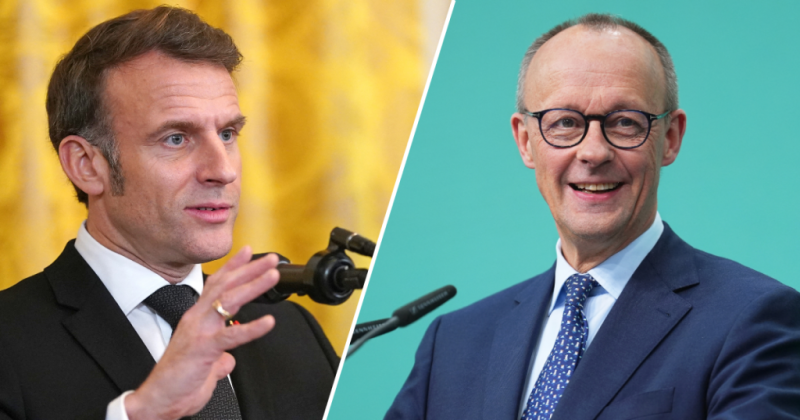
Merz and Macron ignite a new EU vision—but it’s built on shaky ground. Behind the public romance between France and Germany lies a storm of unresolved tensions. Can Merz and Macron truly redefine Europe, or is this just another act in Brussels’ endless theatre of delusion?

When Friedrich Merz chose Paris for his first foreign visit, pundits swooned. A conservative hawk from Berlin shaking hands with Emmanuel Macron—the Europhile poster boy—was heralded as the rebirth of the so-called Franco-German “engine” of Europe. But beyond the photo ops and flowery rhetoric lies a deeper truth: this new political marriage is laced with contradictions, mistrust, and strategic desperation.
Yes, Macron finally sees in Merz a partner who isn’t hypnotized by Washington’s shadow. Merz has echoed France’s call for “strategic autonomy” and even suggested that Europe must stop depending on the U.S. for its geopolitical security. That shift would be seismic—if it were sincere.
But Merz is no De Gaulle. He’s a fiscal hawk, backed by conservatives terrified of debt and allergic to the very kind of joint EU borrowing Macron sees as vital for defense investment. The idea of Eurobonds to boost EU arms production? Forget it. Merz’s lips may say “Oui,” but his parliament screams “Nein.”
On trade, the contradiction widens. Merz is obsessed with pushing through the Mercosur deal to save Germany’s export economy. Macron? He’s trapped between his neoliberal instincts and the rage of French farmers ready to torch the deal in protest. The only likely compromise? A cynical abstention, dressed up as diplomacy.
Then there’s energy. France wants subsidies for nuclear power. Germany wants hydrogen flowing from Spain. The pipeline project remains stalled. Defense projects, too—like the SCAF fighter jet—are bogged down by mistrust and national egos. For every handshake, there’s a hidden dagger.
The truth? This so-called “new chapter” is a crisis management romance, born of fear: fear of Trump’s return, fear of NATO decay, fear of China’s rise. But it’s not built on shared values. It’s built on shared panic.
So can the Franco-German engine power Europe’s future? Maybe. But only if both leaders stop playing games—and start confronting the deep fractures beneath the surface.
Until then, it’s not a honeymoon. It’s a photo op on borrowed time.
Analysis
Erdogan’s Horn of Africa Power Grab: Is the Turkish Military Winning Somalia’s Capital?

Turkey is waging a silent conquest in Mogadishu—with troops, drones, and oil deals—and Somalia’s president has already sold the keys.

In the name of “counterterrorism,” Turkey just staged a geopolitical takeover in Mogadishu. Two military planes, 500 soldiers, and more to come. But this isn’t just about Al-Shabaab—this is about Erdogan turning Somalia into a Turkish satellite state, and President Hassan Sheikh Mohamud is rolling out the red carpet.

The Turkish military is no joke. It’s NATO’s second-largest army, hardened by decades of insurgency warfare, equipped with German tanks, U.S. fighters, and its own lethal drone fleet. Their F-16s fly low while Bayraktar TB2 drones hunt targets—perfect for the urban warfare creeping into Mogadishu’s night.
But what’s terrifying is not just the firepower—it’s the strategy. Turkey isn’t just fighting Al-Shabaab, it’s occupying political space, installing its own contractors, oil firms, and trainers across Somalia. Somalia’s president isn’t leading a resistance—he’s hosting an auction.
Why is Hassan Sheikh letting it happen?

Simple: Erdogan found his puppet. PM Hamza’s Las Anod stunt was smoke and mirrors—a distraction while Ankara’s warships dock, oil deals are signed, and the Somali army becomes a Turkish proxy.
This is the quiet conquest of Mogadishu. The West has pumped in $20 billion in aid over two decades—and what’s left? Al-Shabaab controls Mogadishu after dark. And now, Turkey controls it by day.
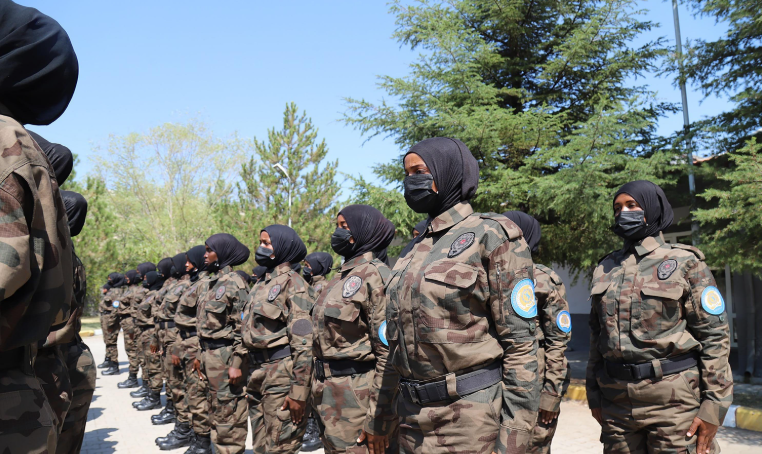
Turkish-trained female Somali commandos arrive in Mogadishu
The irony? While Trump talks business-first diplomacy, Erdogan is doing business with America’s enemies, grabbing oil fields in Somali territory that once belonged to U.S. firms. Turkish firms now guard U.S. diplomats in Somalia. Turkish warships circle the Red Sea. And Turkish drones rule the skies.
This isn’t a partnership. It’s a hostile takeover.

Somalia has been bought. Somaliland has been ignored. And if the U.S. doesn’t wake up, Erdogan’s Ottoman hustle will gut American influence from Africa to the Levant.
Time to name names. Time to cut ties. And time to back the real allies—those who don’t sell their sovereignty for drones and flags.
Analysis
Trump’s War on the World Order: A New Empire Rising

How Trump’s second term is torching the global rules and redrawing power lines—with chaos, calculation, and cold ambition.

Trump’s return has shattered the liberal international system the U.S. once built. This WARYATV analysis unpacks how his wrecking ball diplomacy is remaking the world—and why it could be dangerous or brilliant.
Trump isn’t just rewriting U.S. policy—he’s smashing the entire world order with a smile and a shrug. From NATO to the UN, from China tariffs to the Gaza evacuation plan, the second Trump presidency is burning the global script the U.S. once wrote. And here’s the twist: he’s not hiding it.
Forget liberal principles, multilateralism, or diplomacy. This is Art of the Deal: Planet Earth Edition. Trump’s worldview is simple—power respects power, and rules are for the weak. Whether he’s proposing to absorb Greenland or backing Russia’s land grabs, he’s restoring cynical realpolitik, the kind the West once swore it buried after World War II.
The old order was built on trust, institutions, and shared norms. But Trump saw the cracks—and now he’s kicking them wide open. His tariffs aren’t economic policy; they’re blunt-force tools to force loyalty and tribute. His budget cuts aren’t ideological; they’re designed to starve globalism and fuel nationalism.
And here’s the unsettling part:
It’s working.
China is bleeding from economic pressure. Europe is scrambling to adapt. African and Asian states are chasing new deals, desperate to avoid being left behind. Trump knows the UN is a relic, that Bretton Woods is obsolete, and that dominance—not diplomacy—is the new global currency.
Israel plays along, hoping to gain from the chaos. Netanyahu says nothing, knowing Trump might just hand him historic wins. But beneath the silence is fear—because when America breaks the world, no one is safe, not even its allies.
So is this the end of the post-WWII order? Maybe not. But Trump has already buried the illusion that it still runs the world.
This isn’t strategy—it’s demolition. And what rises from the rubble could reshape the century.
Analysis
From Cell to Summit: The Prisoner Who Became Syria’s President
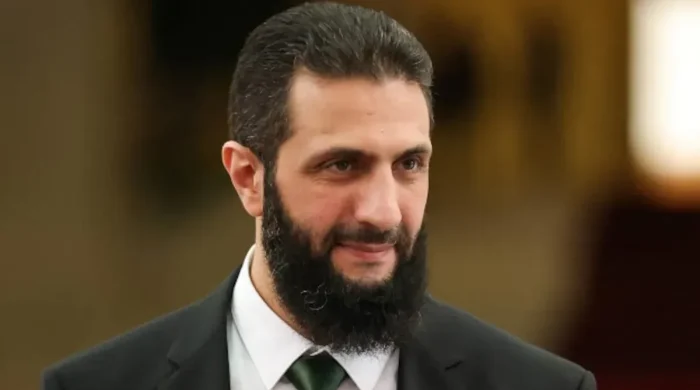
Ahmad al-Sharaa’s leaked prison past upends Syria’s new narrative—just as he prepares to sit at the Arab League table.
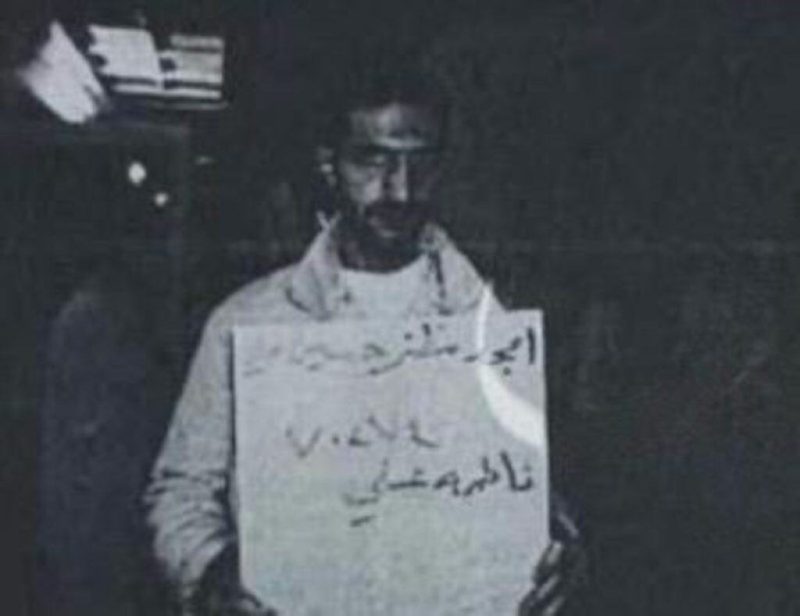
Leaked documents reveal Syria’s new president Ahmad al-Sharaa was once imprisoned in Iraq under a fake name. The story reshapes Syria’s post-Assad era.
The Syrian revolution’s most surprising twist just detonated across the Arab world: Ahmad al-Sharaa, the man now leading Syria’s transition after the collapse of Assad’s regime, was once a prisoner in Iraq—detained by the U.S. for six years under a false identity.
This revelation isn’t just a backstory—it’s a political earthquake. Documents independently verified show that al-Sharaa, under the alias Amjad Muzafar Hussein Al-Nuaimi, was arrested in 2005 and held at Taji prison until 2011. It wasn’t a mistake. It was strategy: fluent in a Mosul dialect and armed with forged papers, he evaded detection during the height of America’s war in Iraq.
That prison sentence forged more than just survival—it built a legend. Al-Sharaa returned to Syria in 2011 as the uprising began, aligned briefly with jihadist factions, including Al-Qaeda and ISIS, before launching his own faction: Hayat Tahrir al-Sham (HTS). By 2016, he had reinvented himself again—breaking with extremism and consolidating control over Idlib, Syria’s last opposition stronghold. In short, he didn’t just witness the Syrian conflict—he dominated it.
Now, just months after Damascus fell and Assad’s regime collapsed, this same man—once known only as Abu Muhammad al-Golani—is Syria’s interim president. He’s set to appear on May 17 at the Arab League summit in Baghdad, and the world will have to decide: is al-Sharaa a revolutionary hero, or a militant with a new mask?
Why does this leak matter now? Some suspect Iranian sabotage, others blame rivals inside Iraq. Either way, it exposes a narrative Syria’s new government hoped to bury. Al-Sharaa isn’t a clean-suited technocrat or a Western-trained reformer. He’s a battlefield survivor, molded by war, prison, and ideology.
For some, that’s exactly what Syria needs—a fighter who outlived Assad, the jihadists, and foreign occupations. For others, it’s proof that Syria’s future remains in the grip of men shaped by conflict, not consensus.
But one thing is clear: the war may have changed Syria’s map—but it never let go of its characters. From the shadows of a jail cell to the heights of Arab diplomacy, Ahmad al-Sharaa’s arc captures the volatile DNA of the new Syria.
Reshuffling the Middle East: Israel’s dilemma in the Syrian chaos
After Assad: Will Syria’s new leaders avoid the cycle of brutality?
Who is Asma Assad, the London-born wife of Syria’s deposed dictator?
Syria After Assad: Former prisoners speak of freedom and lingering pain
Iran and Turkey’s condemnation of Israel’s role in Syria: The battle for influence
Syria’s New Leadership: A Rising Force or Another Regional Rival?
Turkey’s Imminent Invasion into Syria Could Spark Regional Chaos
US Removes $10M Bounty on Leader of Rebel Group Now in Charge of Syria
Assad’s Relatives Detained at Beirut Airport Amid Syrian Regime Collapse
Russia’s Currency Airlift to Syria: A Power Play Against Western Sanctions
Russian Delegation Seeks to Secure Military Bases in Syria After Assad’s Fall
Syria Foils Islamic State Bomb Plot at Shiite Shrine Amid Sectarian Tensions
Assad’s Former Aide Claims Putin “Tricked” Deposed Syrian President During Final Days
Post-War Syria: Challenges Loom as Rebel Coalition Faces Uncertain Transition
The Retreat of Iranian Proxies in Syria and Its Broader Implications
Analysis
America Pulls the Plug on Somalia: UN Funding Blocked, AUSSOM on the Brink

Trump eyes embassy closures as US rejects UN plan to fund peacekeepers in Somalia — Mogadishu’s last lifeline in peril.

The US shocks the UN by rejecting funding for African Union forces in Somalia, just as Trump weighs closing the US Embassy in Mogadishu. With Al-Shabaab advancing and oil politics heating up, is Somalia doomed to implode?
The United States just signaled the collapse of Somalia’s last fragile security architecture — and it did so with chilling clarity. Washington has publicly rejected UN efforts to fund the African Union Stabilization Support Mission in Somalia (AUSSOM), effectively gutting any hope for predictable peacekeeping operations in a country teetering on the edge of collapse.

This isn’t just a bureaucratic snub — it’s a geopolitical death sentence for Somalia. Al-Shabaab militants are already testing the vacuum, launching a multi-pronged assault on Adan Yabaal, a key military base in Middle Shabelle. If confirmed, the town’s fall would mark the largest strategic loss since Somalia launched its offensive against terror in 2022.
UN Secretary-General António Guterres warned the Security Council: no funding, no peace. But the US—under Trump’s second-term posture—is slamming the door shut, labeling Somalia as unfit for a hybrid funding model under Resolution 2719. Diplomats are in a panic. Meanwhile, Trump is reportedly planning to close up to 30 diplomatic missions, with Mogadishu’s embassy topping the list.
Somalia’s response? Desperation disguised as diplomacy. The FGS is now peddling oil blocks in contested territories like Nugaal Valley. In a flashy announcement on X, Somalia’s ambassador to the US declared “Somalia is open for drilling,” targeting American firms with an offer it legally and militarily cannot secure.

Somalia’s Ambassador to the United States, Dahir Hassan Arab
The move comes after Somalia’s recognition of SSC-Khaatumo — a region still engulfed in the political wreckage of its war with Somaliland.
This isn’t about development. It’s about weaponizing recognition, resource manipulation, and fake sovereignty in a bid to win Trump’s favor and undermine Somaliland’s momentum.
But while Hargeisa builds forests and attracts foreign media praise, Mogadishu is drowning in debt, insurgency, and denial. The West is tuning out, and even the UN is losing patience. The US, once Somalia’s diplomatic oxygen, is now pulling the plug.
Somalia is not rising — it’s being unplugged.
Analysis
Somalia’s Egypt-Eritrea alliance is no anti-terror pact — it’s a Nile-fueled power play against Ethiopia

Proxy Firestorm in the Horn.

New Georgetown report warns: the Horn of Africa is on the brink of a regional war.
Somalia’s Gamble in the Horn.
As Ethiopia flirts with Somaliland recognition, Somalia deepens ties with Egypt and Eritrea—fueling a proxy showdown in the Horn of Africa. A new Georgetown report warns of a geopolitical powder keg.
TACTICS OR TROJAN HORSES? SOMALIA’S NEW ALLIANCES COULD IGNITE THE HORN
Somalia isn’t just shifting alliances — it’s detonating new frontlines. A new report from the Georgetown Journal of International Affairs tears the veil off Mogadishu’s widening web of military deals and exposes a regional arms race that’s dragging Egypt, Ethiopia, Turkey, and Eritrea into what could become Africa’s next great conflict.
The flashpoint? Somaliland. The January 2024 port access deal between Somaliland and Ethiopia, in which Ethiopia would gain maritime rights in exchange for recognition, has shattered old assumptions. Furious, Somalia raced into the arms of Egypt and Eritrea — two states that already view Ethiopia as a regional nemesis. Egypt’s military cargo to Somalia in early 2025 wasn’t about fighting Al-Shabab — it was about squeezing Ethiopia over the Nile.
The report warns: peacekeeping missions like AUSSOM are no longer neutral. They’re being manipulated by rival states to project hard power under soft banners. With Ethiopia’s troops still embedded in Somalia’s stabilization efforts, the stage is set for internal sabotage masquerading as peace.
Mogadishu’s sudden outreach to Azerbaijan and Turkey further muddies the waters. The UAE, Russia, and China are already entrenched through ports and military outposts, turning Somalia into the ultimate battlefield for global influence.
Forget diplomacy — this is geopolitical brinkmanship at its rawest. The Horn of Africa is becoming a chessboard of oil, access, and arms, and Somalia just moved its queen into check.
WARYATV.COM | FRONTLINE ANALYSIS
Analysis
How Iran, China, and Russia Are Building a Shadow Empire to Cripple the West

The 2025 U.S. threat report reveals a chilling escalation—America’s enemies are no longer acting alone. Welcome to a world where Iran trains proxy killers, China hacks satellites, and Russia prepares nukes in orbit.
WARYATV Exclusive Analysis
What happens when four of America’s most dangerous enemies start coordinating? According to the U.S. Intelligence Community’s 2025 Threat Assessment, we’re already in that nightmare—and the world’s balance of power is tilting fast. Iran, Russia, China, and North Korea are no longer just isolated threats; they’re actively aligning to undermine the West on every front—military, cyber, economic, and even orbital warfare.
Iran is arming to the teeth and rallying its regional proxies—the Houthis, Hezbollah, and al-Shabaab—with precision-guided drones and ballistic missiles aimed squarely at Israel and U.S. forces. Despite its internal crises, Tehran is playing the long game. It’s forging deeper alliances with Russia and China, supplying drones to Moscow and quietly embedding networks inside the U.S. itself, targeting former and current officials.
Meanwhile, Russia has fully shifted to wartime footing. Despite 750,000 casualties in Ukraine, Putin is more defiant than ever. Moscow is stockpiling weapons, deploying nuclear subs near American shores, and now developing a space-based nuclear satellite—a potential Pearl Harbor in orbit. The Kremlin is also flooding the globe with anti-American propaganda using AI-generated influencers and fake news bots.
Then there’s China—the ringleader of digital authoritarianism. It’s no longer just about Taiwan. Beijing is stockpiling critical minerals, buying ports from Greenland to the Horn of Africa, and arming its AI-driven army with satellite killers. China’s Volt Typhoon and Salt Typhoon cyber ops have already penetrated U.S. infrastructure. Next up? LLM-powered disinformation to flood American minds with doubt and division before the 2026 elections.
North Korea? It’s no longer the clownish rogue state. It’s sending troops to help Russia in Ukraine and funneling war profits into its expanding nuclear arsenal. The DPRK now flies hypersonic missiles capable of evading U.S. defenses. Kim Jong Un is no longer begging for attention—he’s trading nukes for influence.
The scary part? These four regimes are increasingly acting as one strategic axis. The U.S. report makes it clear: if war breaks out with one, the others may follow.
Welcome to the new world disorder.

Analysis
South Korea: Ties Established with Syria Amid Shift in Middle East Alliances
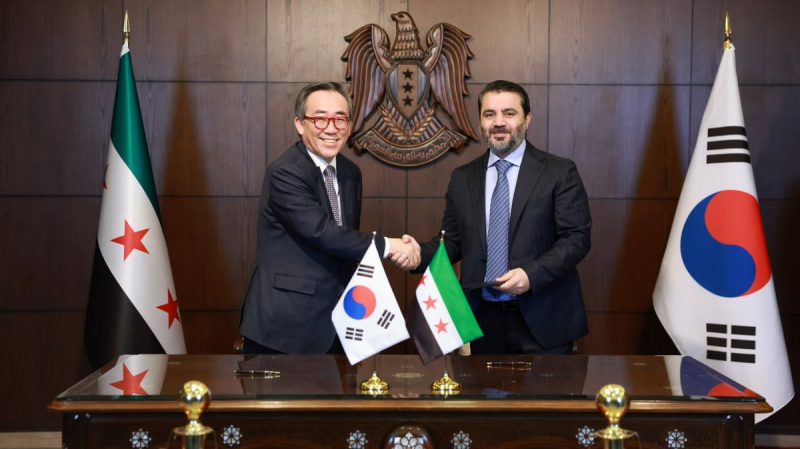
Seoul forms ties with Damascus—once North Korea’s close ally—signaling deeper fractures in Kim Jong Un’s global circle.
From Cold War enemy lines to unexpected diplomacy, South Korea has pulled off a quiet but powerful geopolitical win: establishing full diplomatic ties with Syria, a state long entrenched in North Korea’s orbit.
This isn’t just a photo-op. It’s the final piece of Seoul’s 191-state UN diplomatic puzzle—and a direct message to Pyongyang. The deal, signed in Damascus by South Korean Foreign Minister Cho Tae-yul and his Syrian counterpart Asaad al-Shibani, opens the gates for economic collaboration, reconstruction assistance, and developmental aid to a battered but rebuilding Syria.
But the deeper story? Syria’s new transitional government is recalibrating. Under President Ahmed al-Sharaa, Damascus is charting a path away from militant reliance and Iranian dependence. Former HTS affiliates and technocrats now sit together in a reform-minded cabinet that’s prioritizing civil unity, dismantling militias, and inviting investment—from Seoul, not Tehran.
Meanwhile, North Korea is silent. Since Assad’s fall, Kim Jong Un’s state media has hardly mentioned Syria—except for one vague nod to “the Middle East crisis.” And while North Korea once flooded Syria with arms and advisers, it now watches as South Korea lands in the heart of its former ally’s reconstruction blueprint.
Strategically, this could be a diplomatic domino: Syria joined Turkey’s Anatolia Forum, hinting at a new regional outreach effort, even as the country remains divided—with Turkish forces, US-backed SDF, and former militias still active.
Seoul’s next move? Offering its post-war economic miracle model as a blueprint for Syria’s rebirth—and inserting itself into Middle Eastern politics like never before.
Pyongyang has lost a foothold. Washington is watching. Beijing is calculating. And Syria? It may have just opened its gates to a brand new alliance map.
-

 Analysis2 months ago
Analysis2 months agoSaudi Arabia’s Billion-Dollar Bid for Eritrea’s Assab Port
-

 ASSESSMENTS3 weeks ago
ASSESSMENTS3 weeks agoOperation Geel Exposes the Truth: International Community’s Reluctance to Embrace Somaliland as a Strategic Ally
-

 Somaliland3 months ago
Somaliland3 months agoSomaliland and UAE Elevate Ties to Comprehensive Strategic Partnership
-

 Africa1 year ago
Africa1 year agoHow Somaliland Could Lead the Global Camel Milk Industry
-

 Analysis1 year ago
Analysis1 year agoIran escalates conflict, attacking Israel; US forces help Israel to intercept Iranian projectiles
-

 Top stories11 months ago
Top stories11 months agoGunmen Kill 11 in Southeastern Nigeria Attack, Army Reports
-

 Analysis1 year ago
Analysis1 year agoIsrael and Iran on Edge: Tensions Escalate Amidst Rising Threats
-

 TECH11 months ago
TECH11 months agoZimbabwe Approves Licensing of Musk’s Starlink Internet Service





























